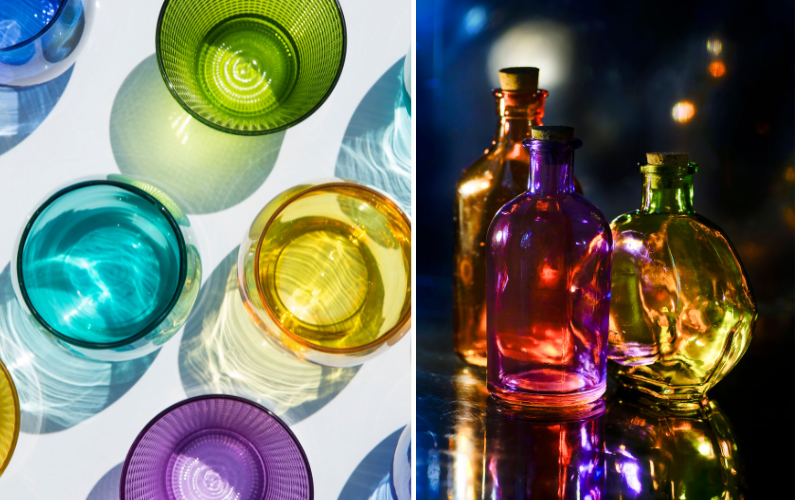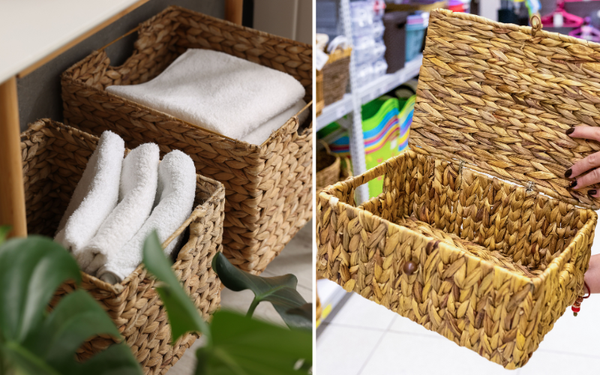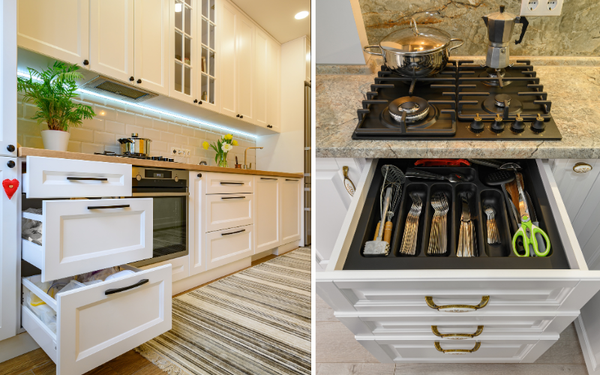Colored glassware has woven its way through time, reaching peak popularity across distinct historical periods. From ancient Egyptian ingenuity to the artistic flair of Art Nouveau, each epoch’s love for colored glass tells a story of culture and aesthetics. This exploration addresses the question, “when was colored glassware popular?” and invites you to discover the eras that cherished this vibrant craft.
Key Takeaways
- Colored glassware has a rich history with cultural significance, dating back to ancient civilizations like Egypt and Rome, and peaking during various eras such as the Renaissance and Art Nouveau period, where each culture contributed unique techniques and styles to the craft.
- Different time periods favored different hues in glassware, reflecting the cultural and artistic trends of the time—from the bold colors of medieval stained glass to the pastel shades of the Georgian and Victorian eras, and the jewel tones of the Art Deco movement.
- The creation of colored glassware is a complex blend of art and chemistry, utilizing techniques that involve mixing sand and cullet with metal oxides and compounds to create a spectrum of colors, with many contemporary glassmakers still upholding these traditional methods.
A Spectrum Through Time: The Peaks of Colored Glass Popularity
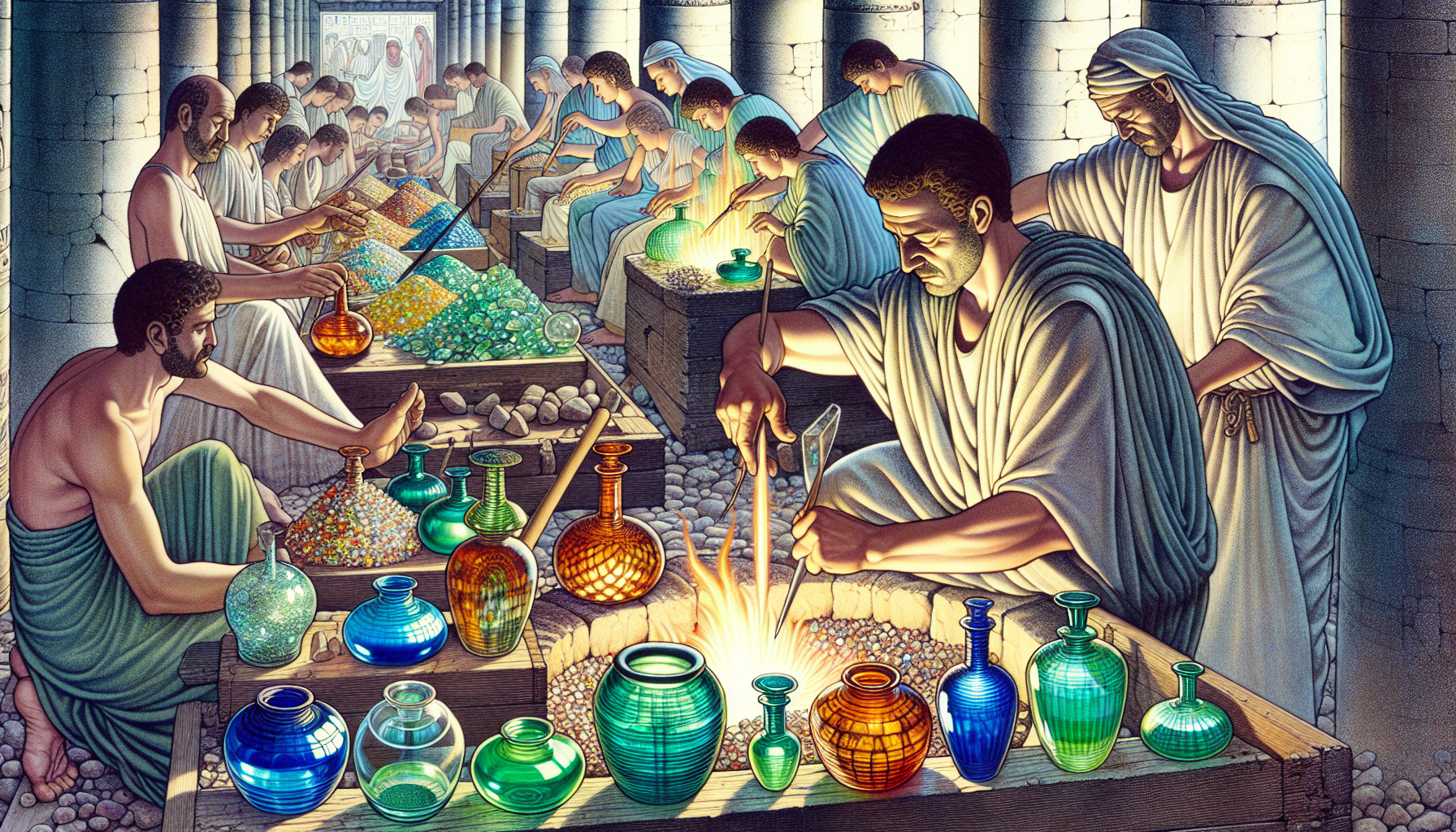
Throughout history, colored glass has been cherished as a form of art. Its prominence has peaked in different epochs, each one contributing unique methodologies and aesthetics to the craft. This journey through time reveals the cultural and artistic significance of colored glass, from its ancient beginnings to its modern-day applications. The peaks of colored glass popularity span across various civilizations, each contributing to the evolution and refinement of this exquisite art form.
Colored glass has adorned everything from the grand stained glass windows of Gothic cathedrals to the intricate glass lamps of the Art Nouveau period. Its applications have been as diverse as the cultures that embraced it, with each era leaving its mark on the craft. Navigating these periods allows us to track the evolution of colored glass, including:
- The pioneering advancements of ancient Egyptians
- The prevalent use in the Roman Empire
- The Venetian craftsmen’s masterpieces
- The lavish designs of the Victorian era
Ancient Beginnings and Egyptian Innovation
The story of colored glass begins nearly 5,000 years ago in Mesopotamia, but it was the ancient Egyptians who truly innovated the craft. They pioneered techniques that involved:
- Crushing quartz pebbles and mixing them with plant ashes
- Heating the mixture to high temperatures to form glass
- Adding metal-containing chemicals to create vibrant hues that adorned various objects
These early glassmakers poured refined glass powder through clay funnels into containers, achieving colors that mesmerized with their beauty. The legacy of these ancient techniques can still be seen in the glassmaking processes used today, showcasing the ingenuity and artistic spirit of the Egyptians.
Roman Empire and the Spread of Glassware
The Roman Empire was instrumental in the proliferation and advancement of colored glass. Romans advanced the techniques of glass formation, laying the foundation for modern glassmaking practices. The empire’s vast reach facilitated the dissemination of these techniques, making glassware a common feature across Roman territories.
Roman glassmakers produced a variety of items, including:
- Vases
- Bottles
- Cups
- Bowls
- Plates
- Jewelry
The spread of these glassware items across the empire not only highlighted the utility of glass but also its aesthetic appeal, influencing cultures far and wide.
Renaissance Revival and Venetian Mastery
In the Middle Ages and the Renaissance, Venice established itself as the hub of glassmaking. Venetian craftsmen, particularly those on the island of Murano, perfected the art of glass coloring and blowing. They produced vibrant glass pieces in rich greens, royal blues, and velvety purples, demonstrating an unparalleled mastery of the craft.
The publication of ‘Arte Vetrarie’ by Antonio Neri in the Renaissance played a pivotal role in advancing glassmaking knowledge. This period saw a revival of colored glass artistry, with Venice at its heart, influencing glassmakers across Europe and contributing to the rich tradition of Murano glass.
Victorian Opulence and Art Nouveau Elegance
The Art Nouveau period signified a remarkable amalgamation of glass production and aesthetic art. This era saw the rise of intricate designs and vibrant colors in glassware, with Louis Comfort Tiffany becoming an iconic figure representing this union. Tiffany Studios produced stunning pieces that combined artistry with technical skill, resulting in unique and intricate designs emblematic of the Art Nouveau style.
These designs were not just aesthetically pleasing but also reflected the era’s fascination with nature and organic forms. The opulence of the Victorian era and the elegance of Art Nouveau glassware continue to influence modern design, showcasing the timeless appeal of colored glass.
A Kaleidoscope of Colors: Identifying Popular Glass Hues by Era
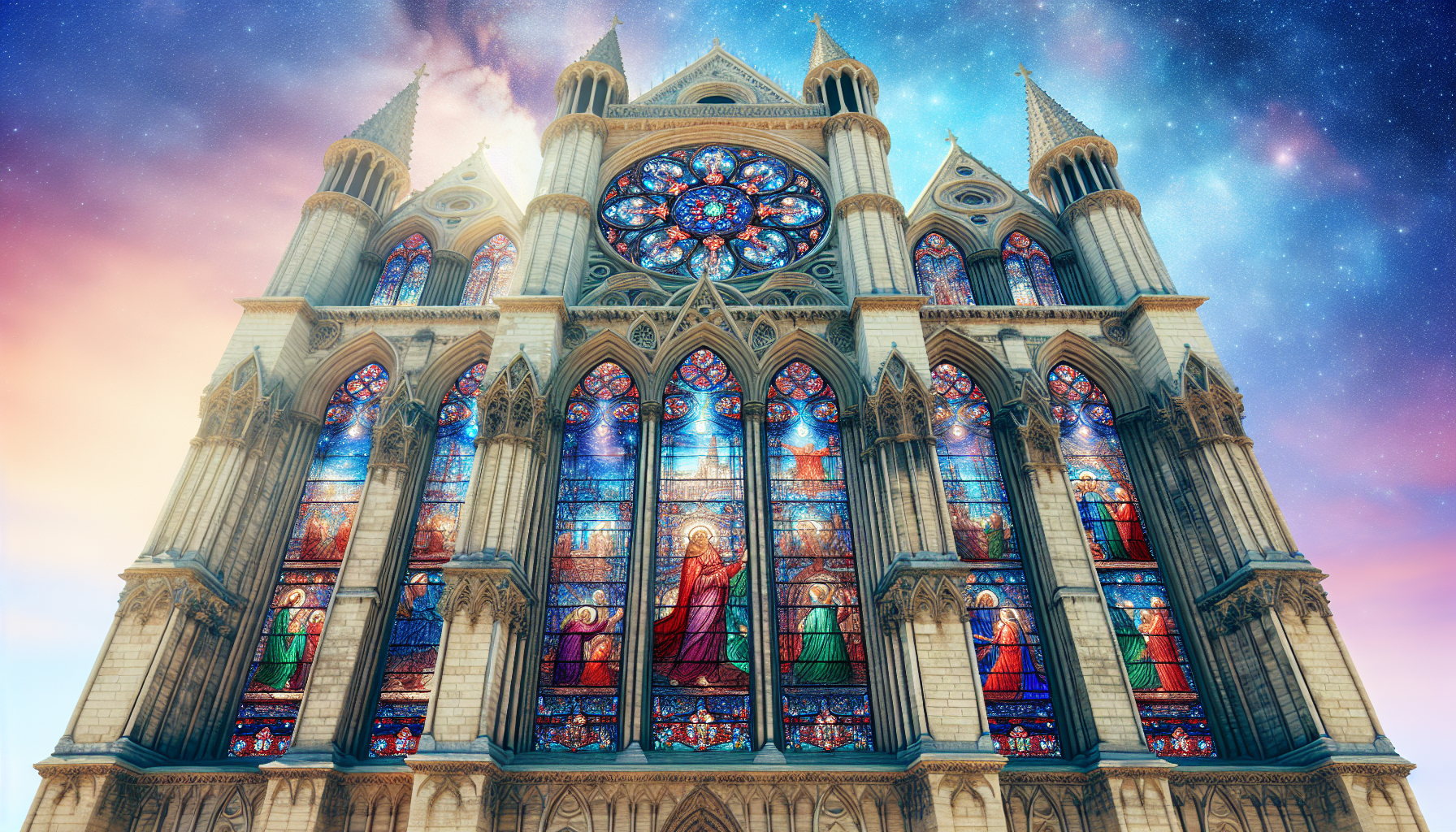
Each epoch of colored glass production introduced a palette of hues, mirroring the cultural and artistic inclinations of the era. From the bold and mystical colors of medieval stained glass windows to the luxurious jewel tones of the Art Deco period, these colors tell a story of human creativity and expression. Understanding these hues offers us a glimpse into the past, where each shade had its own significance and purpose.
The palette of colored glass evolved with advancements in techniques and materials, allowing artisans to create a spectrum of colors that dazzled the eye. Exploring the hues favored in various periods reveals how these colors bear witness not only to the craftsmanship but also reflect the aesthetic preferences of the era.
Medieval Mystique with Stained Glass Windows
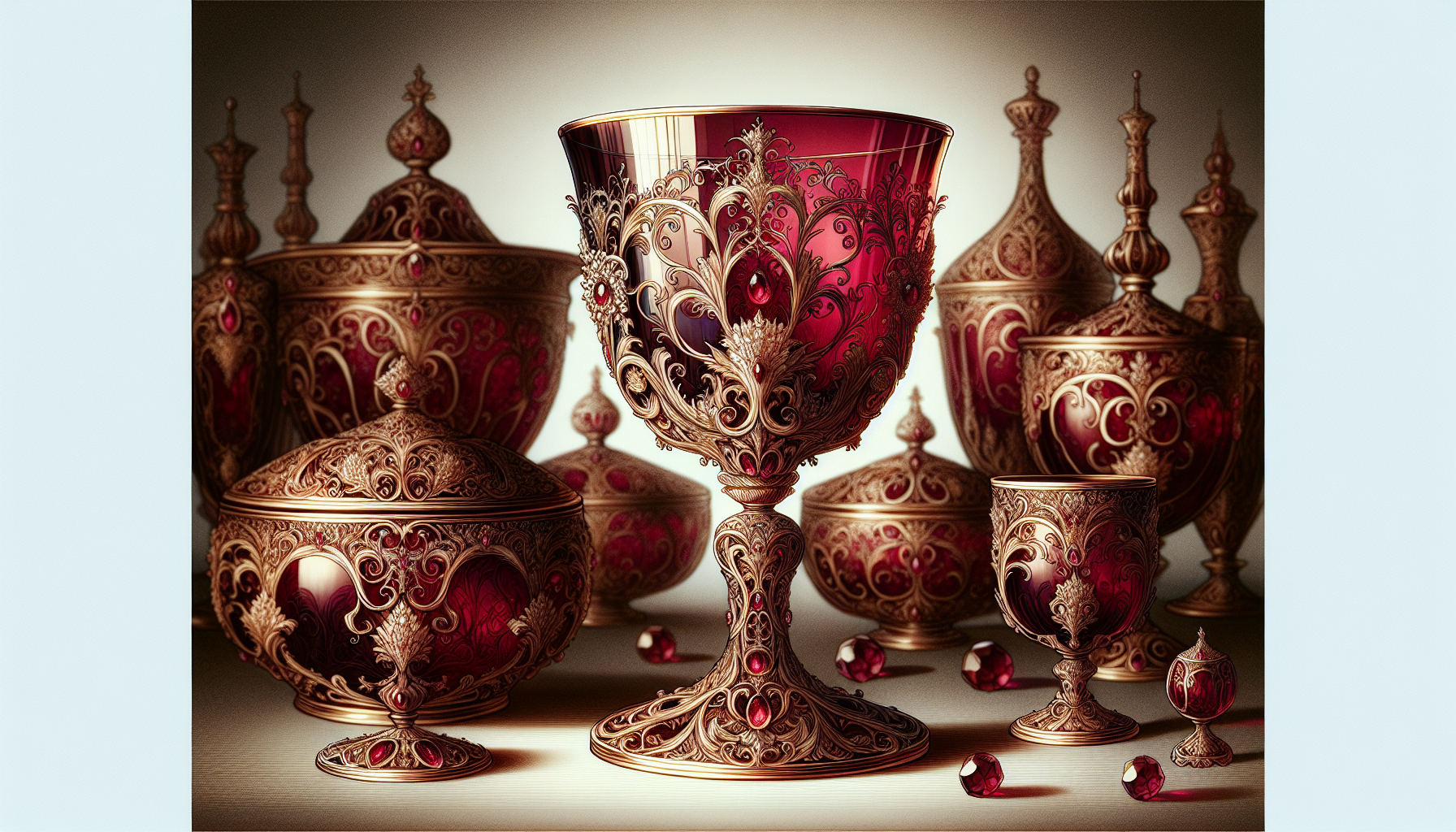
Medieval stained glass windows were renowned for their bold and vibrant colors, which played a significant role in enhancing the spiritual experience in religious settings. These windows depicted biblical scenes, transforming natural light into a kaleidoscope of colors that brought these stories to life. Some key features of medieval stained glass windows include:
- Bold and vibrant colors
- Depiction of biblical scenes
- Use of natural light
- Introduction of vivid blue soda glass (although rare)
The introduction of vivid blue soda glass, along with the use of clear glass, added a new dimension to the artistry of the time.
Craftsmen in the medieval period used techniques that either took advantage of the natural colors occurring due to impurities in silica or through the use of vivid blue soda glass. The sapphire blue color used in stained glass during this period was associated with divine gloom, contrasting with the idea of God as the father of lights. The stained glass windows in medieval churches, like those in Chartres Cathedral, are a testament to the era’s artistic and spiritual aspirations.
Cobalt and Ruby Reds of the Renaissance
The Renaissance era favored luxurious and opulent glassware, with rich colors like cobalt blue and deep ruby red becoming highly sought after. Gold was used to create the striking ruby red color, showcasing the innovative approach and taste for opulence in Renaissance art. Silver nitrate was also employed to produce shades ranging from pale yellow to deep gold.
Renaissance stained glass windows in churches were grand in scale, featuring lavish colors and expert craftsmanship. The period also saw the rise of secular stained glass panels, often featuring family coats of arms or humorous scenes, reflecting the era’s love for light-filled rooms and artistic expression.
Pastel Prettiness in Georgian and Victorian Times
The Georgian and Victorian eras introduced pastel shades into glassware, aligning with the predominant interior design aesthetics of the time. These eras favored softer hues like pinks and pale yellows, which complemented the elegant and refined decor of the period.
These pastel colors were not only used in decorative items but also in functional glassware, adding a touch of sophistication to everyday life. The delicate and pretty shades of Georgian and Victorian glassware continue to be admired for their subtle beauty and historical charm.
Jewel Tones and Art Deco Glamour
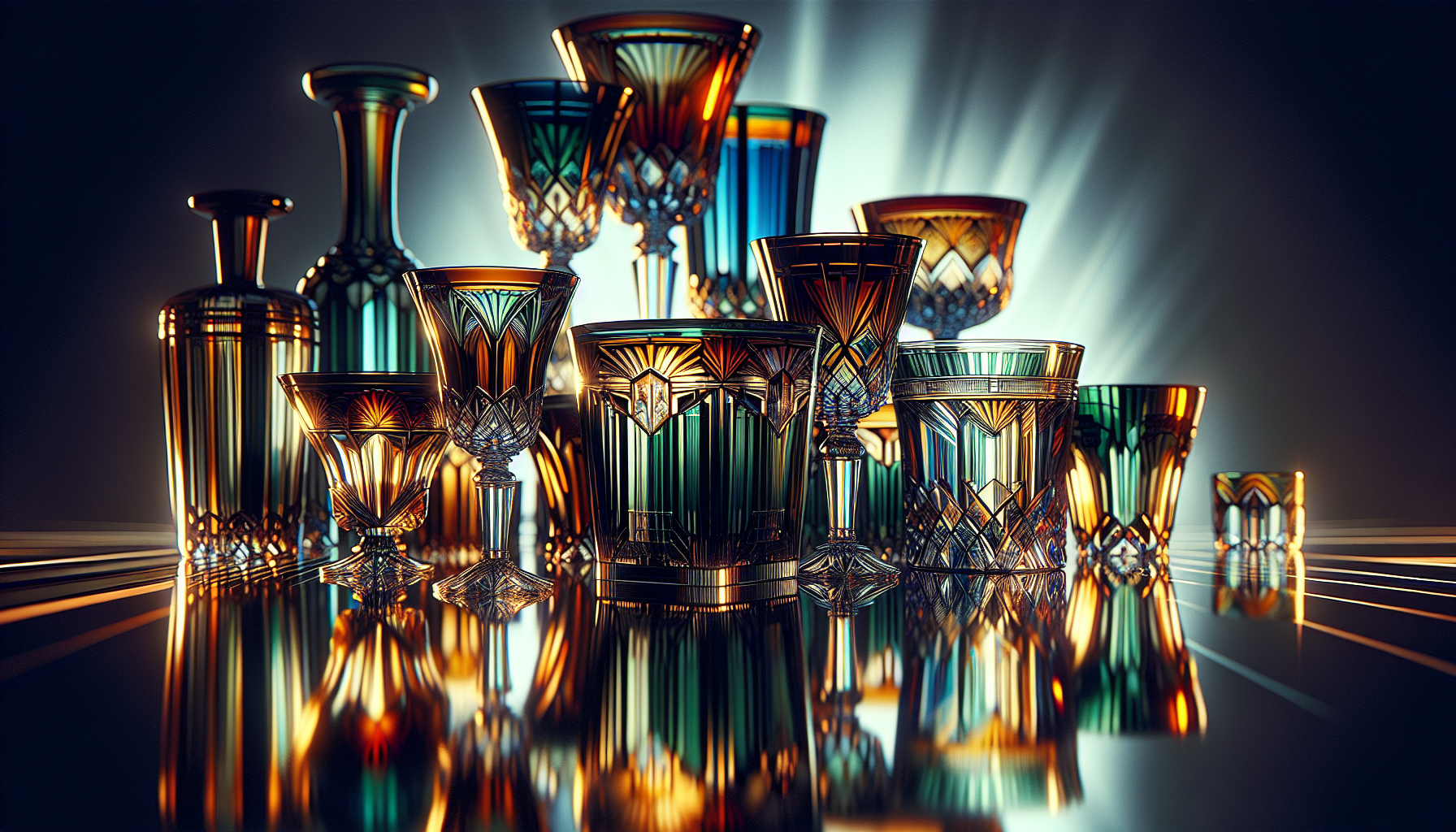
The Art Deco movement brought a new level of glamour to colored glassware, with jewel tones like dark green, amber, and cobalt blue becoming highly popular. Tiffany Studios, known for their striking Favrile glass pieces, epitomized the boldness and elegance of this era. These pieces were characterized by their iridescent colors and intricate designs, reflecting the Art Deco penchant for luxury and sophistication.
Depression Glass, with its vibrant array of colors, particularly green and blue, also became popular during this period. The Art Deco movement’s influence on stained glass windows can be seen in the works of artists like Jacques Grüber, whose secular masterpieces depicted natural motifs in rich, bold colors.
The Craftsmanship Behind the Color: Techniques and Materials
The creation of colored glass is a fusion of artistry and science, where techniques and materials play pivotal roles in producing the desired hues. The process begins with melting a mixture of sand and cullet at temperatures exceeding 2,900 degrees Fahrenheit, creating a state of liquid glass. The addition of metal oxides and other compounds to the molten glass results in a wide range of colors, each with its own unique properties.
Understanding the different pigments and their interactions with the glass matrix allows artisans to produce a diverse palette of colors, including:
- vibrant reds
- greens
- subtle pastels
- deep jewel tones
This section will delve into the techniques and materials that have been perfected over centuries to create the stunning colors we see in colored glassware today, including the use of crystal glass.
From Molten Glass to Masterpiece
The practice of incorporating powdered metal oxides into molten glass to generate colors originated in the 8th century when the chemist Geber disclosed their fundamental role in glass production. This method involves carefully controlling the proportions of metal oxides, sulfides, and other compounds to achieve the desired hue.
For instance, adding copper to the glass mixture enhances the vivaciousness of red and green colors. Today’s artisans continue to follow specific recipes, blending traditional techniques with modern innovations to create masterpieces that reflect the rich heritage of colored glass.
Innovations in Glass Coloring
Innovations in glass coloring have expanded the palette of available hues, allowing for more intricate and vibrant designs. The introduction of silver stain in the 14th century was a significant milestone, offering a wider range of colors and enhanced detail in stained glass. Amber glass, produced by adding sulfur, iron, and carbon, provides a warm, earthy tone that has been popular for centuries.
Cobalt blue glass, achieved by incorporating cobalt oxide, is known for its striking and vibrant hue, requiring only a few parts per million to attain its color. Green glass, typically made by adding chromium oxide, has been a favorite for its natural and refreshing appearance. These innovations have allowed artisans to explore new artistic possibilities and create glass pieces that captivate with their beauty.
Preservation of Tradition: Modern-day Heirs to Historic Techniques
Even with technological advancements, numerous modern glassmakers uphold traditional handcrafted techniques. In specialty shops, artisans still blow glass by hand, maintaining the age-old methods that have been passed down through generations. This preservation of tradition is essential for maintaining the cultural significance and unique value of colored glassware in the modern era.
Today’s glassmakers often incorporate modern technology with traditional techniques, fostering innovation while honoring the craft’s heritage. This blend of old and new ensures that the art of glassmaking continues to evolve, creating pieces that resonate with contemporary audiences while preserving the timeless beauty of colored glass.
Collecting the Rainbow: The Market for Vintage and Antique Colored Glassware
The vintage and antique colored glassware market is thriving and dynamic, shaped by factors like rarity, condition, and historical significance. Collectors and decorators are drawn to the unique designs and vibrant colors of these pieces, which often serve as focal points in modern homes. The appeal of vintage glassware lies in its ability to tell a story, connecting us to the past through its beauty and craftsmanship.
Depression Glass, manufactured from 1920 to 1950, retains its popularity among collectors due to its complex patterns and vibrant hues. The value of these pieces has increased over time, driven by a dedicated community of collectors who appreciate their historical significance and aesthetic appeal.
Depression Glass: America's Love Affair with Affordable Beauty
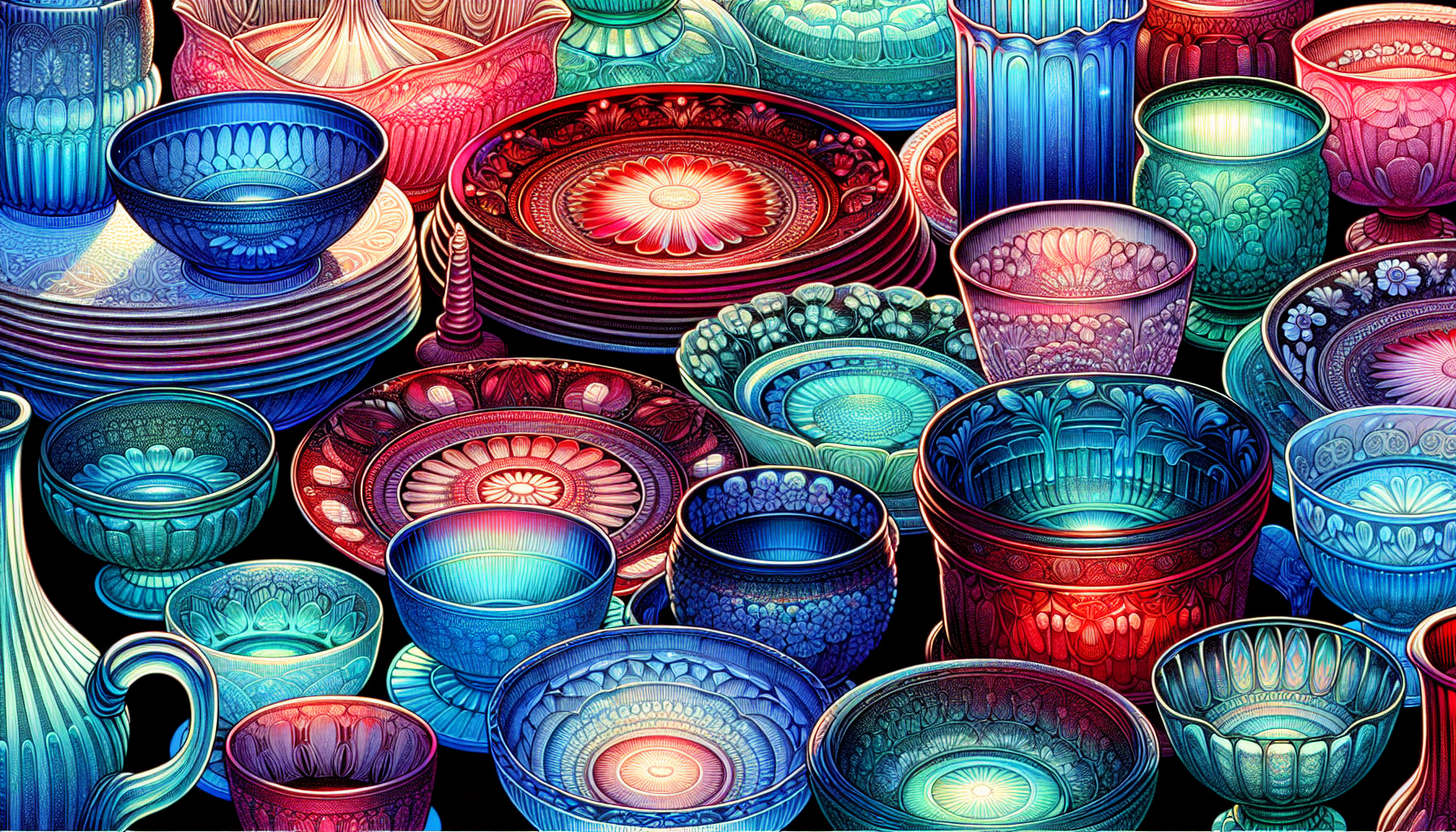
Depression Glass, mass-produced during the economic hardships of the 1920s and 1930s, provided an affordable option for those who desired the luxury look of glassware. Its intricate patterns and vibrant colors made it a beloved item in American households, reflecting the resilience and creativity of the era. Unlike lead glass, Depression Glass was more accessible to the average consumer.
Today, Depression Glass holds high value among collectors, with specific patterns and colors in high demand. The interest in these pieces spans multiple generations, driven by inheritance, investment opportunities, and a love for their nostalgic charm.
Chartres Cathedral to Contemporary Crafts: Stained Glass Endures
From the magnificent cathedrals of medieval Europe to contemporary homes, stained glass windows have retained their charm. Historical stained glass panels, like those from the Chartres Cathedral, continue to be highly sought after for their intricate designs and vibrant colors. These pieces often find new life in modern homes, sourced from antique stores, flea markets, or online platforms, adding a touch of historical elegance to contemporary decor.
Custom-made stained glass windows are also popular, allowing homeowners to commission unique designs that reflect their personal aesthetics. Specialized companies offer these bespoke services, blending traditional craftsmanship with modern design preferences in both stained glass and painted glass creations.
The enduring appeal of both stained glass and leaded glass showcases their timeless beauty and versatile application in both historical and modern contexts, as they create stunning displays of reflected light.
Integrating History: Colored Glass in Modern Decorating
Incorporating colored glassware into modern decor can enrich contemporary spaces with depth, character, and historical resonance. Vintage pieces, such as vases or light fixtures, can be repurposed to serve both functional and decorative purposes. These unique items provide a striking contrast to minimalist designs, creating a focal point that draws the eye and sparks conversation.
A successful integration of colored glassware requires an understanding of balance and color theory. The vibrant hues and intricate designs of colored glass can enhance a room’s aesthetic without overwhelming it. By thoughtfully combining these historical pieces with modern elements, homeowners can create spaces that are not only beautiful but also rich in cultural significance and personal meaning.
Summary
The journey through the history of colored glass reveals a rich tapestry of artistic innovation and cultural significance. From the early innovations of ancient Egyptians to the luxurious opulence of the Renaissance and the bold glamour of the Art Deco period, each era brought its own unique contributions to the craft. The various hues favored by different periods reflect the evolving tastes and technological advancements of society.
Today, the timeless appeal of colored glass continues to captivate collectors and decorators alike. Whether repurposing vintage pieces or commissioning custom designs, integrating colored glass into modern decor adds depth and character to contemporary spaces. The enduring beauty and cultural significance of colored glass ensure that it will remain a cherished art form for generations to come.
Frequently Asked Questions
What are some of the earliest examples of colored glass?
Some of the earliest examples of colored glass date back nearly 5,000 years ago to Mesopotamia and ancient Egypt, where glassmakers used crushed quartz pebbles and plant ashes to create vibrant glassware.
How did the Roman Empire influence glassmaking techniques?
The Roman Empire significantly advanced glassmaking techniques, spreading the use of glassware and laying the foundation for modern formation techniques.
What colors were popular in Renaissance glassware?
During the Renaissance, popular colors in glassware included deep ruby red and shades of yellow to gold, reflecting the era's opulence.
Why is Depression Glass popular among collectors?
Depression Glass is popular among collectors due to its historical significance, intricate patterns, and vibrant colors that reflect America's resilience during economic hardship. It was produced from 1920 to 1950.
How can colored glass be integrated into modern home decor?
You can integrate colored glass into modern home decor by repurposing vintage pieces, such as vases or light fixtures, to add depth and character to minimalist designs. Understanding balance and color theory is crucial to ensure the pieces enhance the room's aesthetic.
You Might Also Like...
